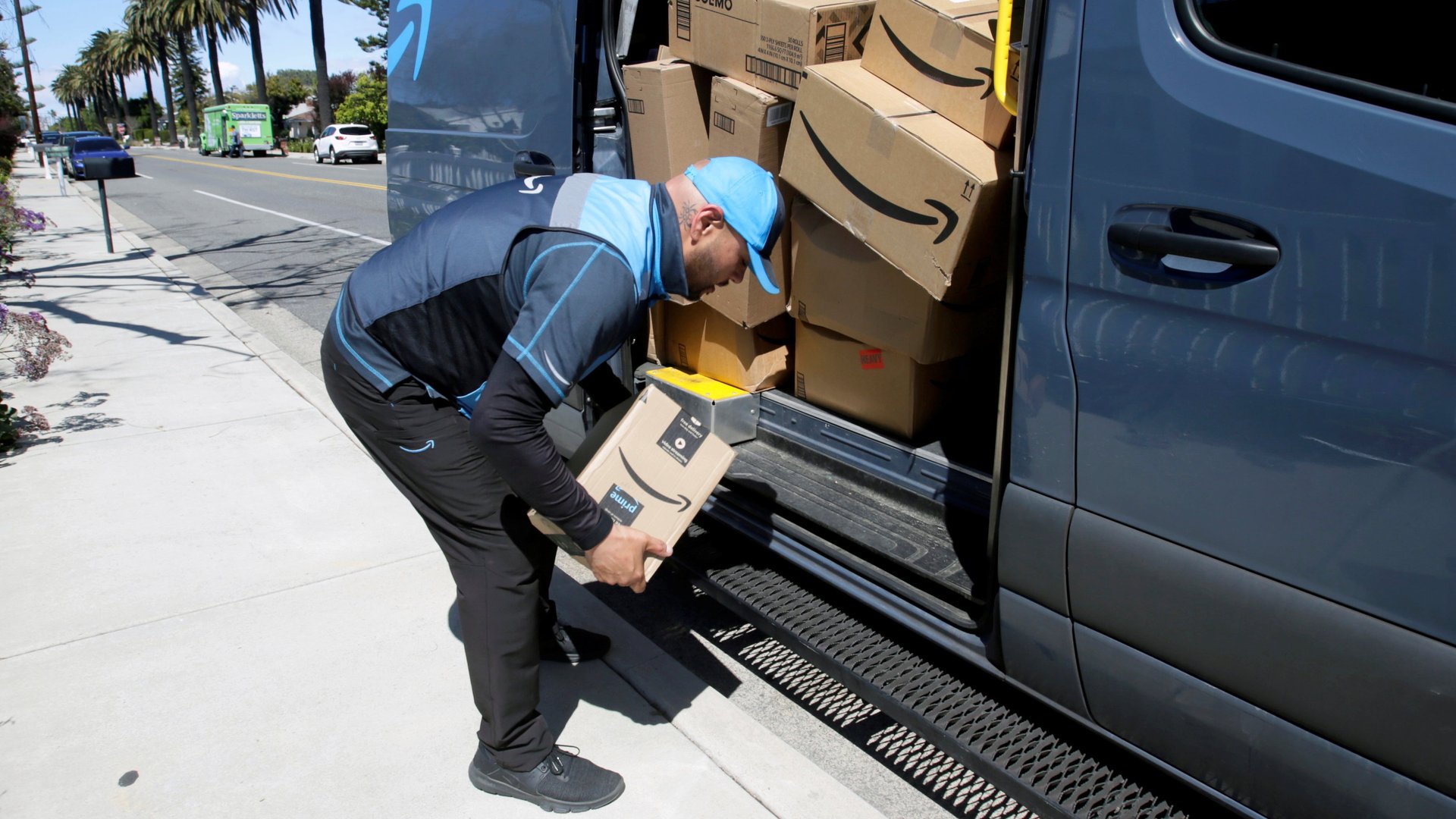The weird pandemic recession delivers a trade surprise
During an economic slowdown, the US tends to see its balance of trade tighten, as it did during the Great Recession and the slow-down at the turn of the century.


During an economic slowdown, the US tends to see its balance of trade tighten, as it did during the Great Recession and the slow-down at the turn of the century.
In pandemic times, the US economy has shrunk faster than it did during the Great Recession, and the unemployment rate has more than doubled since this time in 2019. So why is the gap between what Americans buy and sell abroad larger than a year ago?
The usual pattern can be explained in a couple of ways: The US imports a lot of consumer goods, so when Americans are buying less in general, they buy less from abroad. Monetary policy is often loosened during recessions, which can lead to a more competitive currency and an increase in exports. Fewer luxury products are bought from abroad. American tourists stay home, while foreign tourists might see an opportunity to come spend in the US when their currency will go further.
Since the pandemic forced Americans and indeed people around the world to avoid indoor groups, the economic impact has played out in unusual ways. Compared to the experience during the financial crisis, US imports have rebounded much more quickly than exports.
Start with imports…
Economists have several explanations for this state of affairs. One common denominator is the role of the government’s stimulus efforts, particularly checks mailed to many American households and expanded unemployment benefits for workers who lost their jobs due the pandemic. These benefits were generous enough to boost incomes and lower poverty despite a massive leap in unemployment, and that means more purchases of consumer goods than might otherwise happen in a recession.
What else makes the pandemic recession unique? Service-focused businesses like bars, restaurants, concert halls, hotels, airlines, and sports stadiums have all closed, leaving those who can keep working, particularly white collar workers, with extra money to spend. Many are buying home goods, exercise machinery, televisions, computers, or video game consoles instead. In general, money shifted from services to goods is going to mean a rising share of imports.
“We’ve had this special combination of macro stimulus (fiscal and monetary) plus possibly (data still coming in on this) a shift in consumption patterns toward traded goods due to more at-home activity and people moving into new homes needing to be furnished. That spells more imports,” Kathryn Russ, an economist at the University of California, Davis told Quartz in an email. “If our shift toward imports has been more dramatic than in other countries, then that also spells a widening trade deficit.”
There are other unique factors: The rush to obtain chemicals and materials needed to perform coronavirus tests and develop and deliver vaccines shows up in the data above. So does another response to the government’s rescue efforts: Imports of gold have risen dramatically, likely in response to some investors’ (largely unfounded) fear of rising inflation due to low interest rates and high government spending.
What about exports?
On the other side of the trade balance equation, the US was already facing some headwinds because its leading exporter, Boeing, is still working to convince airlines and regulators that its flagship product, the 737 Max airliner, is safe. Combined with pandemic-driven travel restrictions, the US saw dropping exports of planes and their parts. The trade war with China also shows up here, with less exports of soybeans to a previous top customer.
Since the last recession, the US has also emerged as a major exporter of petroleum. But as coronavirus spread around the world, demand for oil has fallen commensurately, leaving the US exporting less of this money maker. Falling global demand also means other US exports, like cars and car parts, have suffered, too.
The unusual nature of the current recession also shows up in falling exports of artwork, jewelry, and diamonds—goods often purchased by foreign travelers on American shopping sprees that are going unsold with visits to the US banned by many governments.
What’s next?
The atypical trade data helps explain the current moment of uncertainty in the economy after the expiration of many economic support programs enacted by the US government. The biggest difference between the Great Recession and now is the magnitude of the government’s intervention.
Economic activity has begun to rebound but still remains well below pre-pandemic levels. And if the virus continues to spread in the US, more restrictions on activity are unavoidable, as is already happening in Europe.
You can see investors are worried about where this will lead, with the S&P 500 stock index on a downward trend over the last month. In Washington, Democrats in the House of Representatives have pushed for another major rescue package, while Republicans in the Senate and the Trump White House have focused on a smaller rescue more focused on tax cuts, leaving working people—particularly those who are losing hours and jobs—to bear the human cost.
“The biggest question is whether the US will sustain the rescue for the poorest American families,” Russ says. “While trade is recovering much more swiftly than in the Great Recession, childhood food insecurity has been worse than in the Great Recession, with no end in sight. While some are in the throes of a real-estate boom, many others are struggling with eviction.”